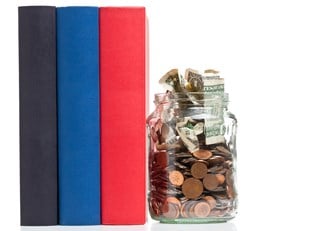There are several different kinds of federal student loan payback plans. If you find the plan that’s right for you, you’ll be able to afford to pay back your loans instead of defaulting on them and ruining your credit.
- Standard Repayment Plan
This is the repayment plan that you are automatically enrolled in when you have federal student loans. With this plan, you have to make a monthly payment of at least $50. You’ll probably have to do this for about 10 years until you can qualify for Student Loan Forgiveness or just pay off your balance. If you can afford the often high monthly payments, this is probably the best option. - Graduated Repayment Plan
If you can’t pay the high payments of the Standard Repayment Plan, but you expect to have your income increase when you get a job or promotion, then this might be the right plan for you. With the Graduated Repayment Plan, your payments start low and increase every two years. Because you pay less in the beginning, you’ll end up paying more interest on your loan than you would with the Standard Repayment Plan. Your loan will be paid off within 10 years. - Extended Repayment Plan
The Extended Repayment Plan provides more opportunity for flexibility than the Graduated or Standard Plan. You can have fixed monthly payments or you can choose to increase them over time. With this plan, you’ll pay your loans back over a period of 25 years. This is nice because it means that your payments are smaller...but not so nice because it means that the payments will hang over your head longer than they would with the other plans. - Income-Based Repayment (IBR)
If you have the Income-Based Repayment Plan, your monthly loan payments won’t go above 15% of your income. You’ll probably make payments for 25 years, after which time your loan debt could be forgiven. If you work in public service, your loan debt could be forgiven after as little as 10 years. - Pay As You Earn Repayment (PAYE)
With this plan, your monthly payments won’t go above 10% of your income. As with the Income-Based Plan, your debt could be forgiven after 10 years if you work in public service. Even if you don’t work in public service, your debt could be forgiven after 20 years. - Income-Contingent Repayment Plan
If you have the Income-Contingent Plan, your payments will be adjusted based on your income, family size, and the amount of money you owe in loans. Your payments will change as your income changes. Your remaining loans may be forgiven after 25 years. You’ll pay more than you would with a 10-year plan because you’ll have to pay more in interest. - Income-Sensitive Repayment Plan
With the Income-Sensitive Repayment Plan, your payments will be based on your annual income, and you have more freedom to choose the size of your monthly payment. Your monthly payment will be between 4% and 25% of your total monthly income. This plan is only available for five years, and then you’ll need to switch to one of the other repayment plans.



